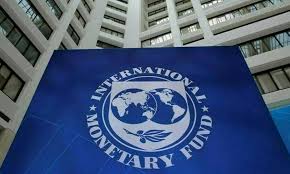The International Monetary Fund (IMF) has revised its global growth outlook upward, citing improved fiscal conditions and a weaker U.S. dollar that is helping to support global demand.
In its July 2025 update of the World Economic Outlook, the Fund now projects global GDP growth at 3.0% for 2025 and 3.1% for 2026 up from earlier estimates of 2.8% and 3.0% published respectively in April.
The revised outlook reflects accelerated economic activity ahead of anticipated tariff hikes, lower effective trade barriers and expansionary fiscal policies in some major economies.
While inflation is forecast to decline globally, the IMF warns that U.S. inflation may remain above target which poses a risk to interest rate stability.
Despite the improved forecast, the IMF cautions that risks remain tilted to the downside, with potential headwinds from rising trade tensions, policy uncertainty and ongoing geopolitical shocks.
“Global headline inflation is expected to fall to 4.2 percent in 2025 and 3.6 percent in 2026, a path similar to the one projected in April. The overall picture hides notable cross-country differences, with forecasts predicting inflation will remain above target in the United States and be more subdued in other large economies”, the report said.
The Fund stressed the need for policymakers to focus on restoring macroeconomic confidence, ensuring long-term fiscal sustainability, and promoting a predictable investment climate to secure durable global growth.
“On the upside, global growth could be lifted if trade negotiations lead to a predictable framework and to a decline in tariffs. Policies need to bring confidence, predictability, and sustainability by calming tensions, preserving price and financial stability, restoring fiscal buffers, and implementing much-needed structural reforms”.
Tight policy stance
On the monetary side of things, the IMF is urging central banks across the globe to tailor monetary policy responses to their unique economic conditions as trade tensions and tariff regimes prolong.
It said, countries not engaging in tariff escalation are however likely to face demand-side shocks, and therefore may have more room to ease policy gradually by reducing interest rates to stimulate economic activity.
“Central banks must carefully calibrate monetary policies to country-specific circumstances to maintain price and financial stability”
Source: Citi Business News


Comments are closed.